
This article is part of a series created in partnership with SiteGround. Thank you for supporting the partners who make SitePoint possible.
Welcome to WordPress! Starting your first WordPress powered blog or website is an exciting, and sometimes confusing, time. You are likely worried about making mistakes and also wanting to get up and running as soon as possible. The intention of this article is to do just that. We aim to cut straight to the core of what you’ll need to build a safe and secure site that is custom fit to your needs, and is easy to manage.
As with any website, you should spend very little time updating, tweaking, and troubleshooting, and more time creating content and interacting with customers. With that in mind, let’s jump right into it.
1. Picking and Learning Your Theme
Picking a theme can be daunting, especially considering there are hundreds of thousands of themes to choose from. The good news for any WordPress beginner is there are a handful of tried and true WordPress themes that are extremely popular and customizable. Divi and Genesis are great options for beginners. They are user-friendly meaning they don’t require in-depth developer skills, they are affordable, and they have a large community to draw support from.
Beyond choosing the right theme comes learning how it works, and how you can customize it to your individual needs. This is accomplished in two ways:
1. Crack open the setup guide.
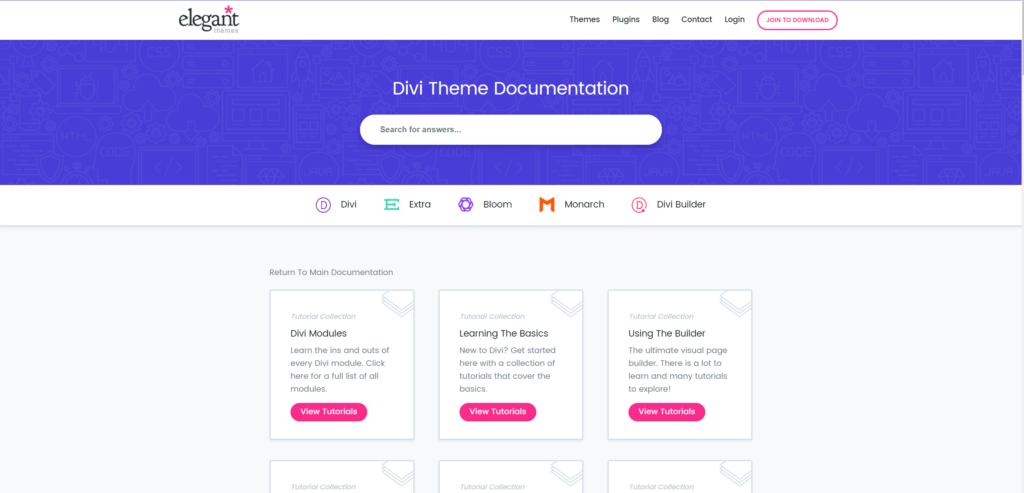
It will give you in-depth instructions on how to download your theme, how to install it on your WordPress site, and how to tailor it to your needs. In it you will find resources to troubleshoot common issues and a section of FAQs that you can draw from when you are feeling a little lost. When all else fails, reach out to customer support by opening a support ticket.
2. Find the discussion board.

An active community is crucial when choosing a theme for your WordPress site. Customer support will help you fix your site and make minor customizations, but the user community will be the ones who give you feedback, show you major changes, and steer you to plugins and tools that will make your site look better and perform better.
2. Protect Your Hard Work By Backing Up Your WordPress Site
Being new to WordPress means you’ve likely never seen the white screen of death or have fallen victim to a malicious hacker who has locked you out of your site. Regularly backing up your WordPress site will ensure you can get back up and running when the day comes that you lose access, or your site breaks from some faulty plugin.
There are three ways you can backup your WordPress site:
- Carefully choose a WordPress hosting provider that offers backup services. Our partner, SiteGround, for example, has an auto-backup system which makes a copy of your site daily. They provide you with the flexibility to restore your data with just a few clicks.
- Back it up yourself using an FTP server and manually transfer the files between your server and your computer on a regular basis.
- Download a backup plugin like UpdraftPlus or BackupBuddy.
3. Make Your Site Search Engine Friendly
With any WordPress site, your goal is likely to get more traffic, more readers, or more customers. One of the best ways to do that is through optimizing your site to rank higher on Google or other search engines. This tactic is called Search Engine Optimization (SEO). While WordPress does a good job out of the box with SEO, these two tips will put you far ahead of your competition with a minimal time investment:
Download an SEO plugin
While there are hundreds of SEO plugins, by far the most popular plugin is Yoast. Many other web-based tools like SEMrush and Moz will become familiar to you as your site grows, but for any WordPress beginner, Yoast is a great start because it is an all-in-one solution that has a clear and easy-to-use interface. To download a WordPress SEO plugin from the admin interface:
Plugins > Add New > Search for ‘SEO’ > Click Install Now

On the next screen simply activate your plugin and follow the instructions for setting it up properly. The instructions can be found on the WordPress download page or within the plugin itself under Settings.
Adjust your permalink settings
According to Yoast, a straightforward permalink structure is ideal for SEO. To take it up a notch add your main keyword somewhere in your post’s name. Adjusting your permalink structure in WordPress is simple:
Go to Settings > Permalinks > Select ‘Post Name’
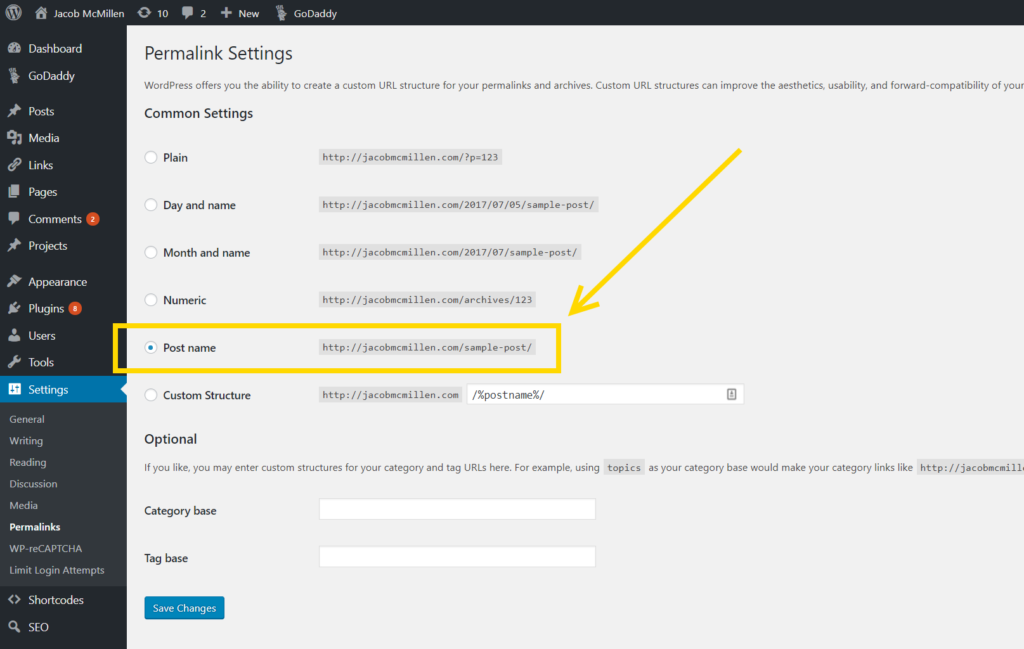
For a more in-depth look at WordPress SEO check out Yoast’s guide.
4. Beef Up Your Security
Strong security for your WordPress site doesn’t need to be expensive or take a long time to set up. These three steps will get you there in no time:
Generate a strong password
Your new WordPress site likely gave you a username and password and should be updated as soon as possible to thwart any hackers from using brute force attacks to gain control of your website. Generating a secure password involves using a different password than any of your other logins and using a long string of multiple numbers, letters, and symbols. If you want a secure password quickly, you can always use a password generator to do the job for you.
Update your site regularly
Update WordPress, your plugins, and your themes regularly to close any backdoors and vulnerabilities left open to hackers. Looking at the graphic below you can see that WordPress notifies you when any updates are available and makes updating as simple as clicking ‘Update’.
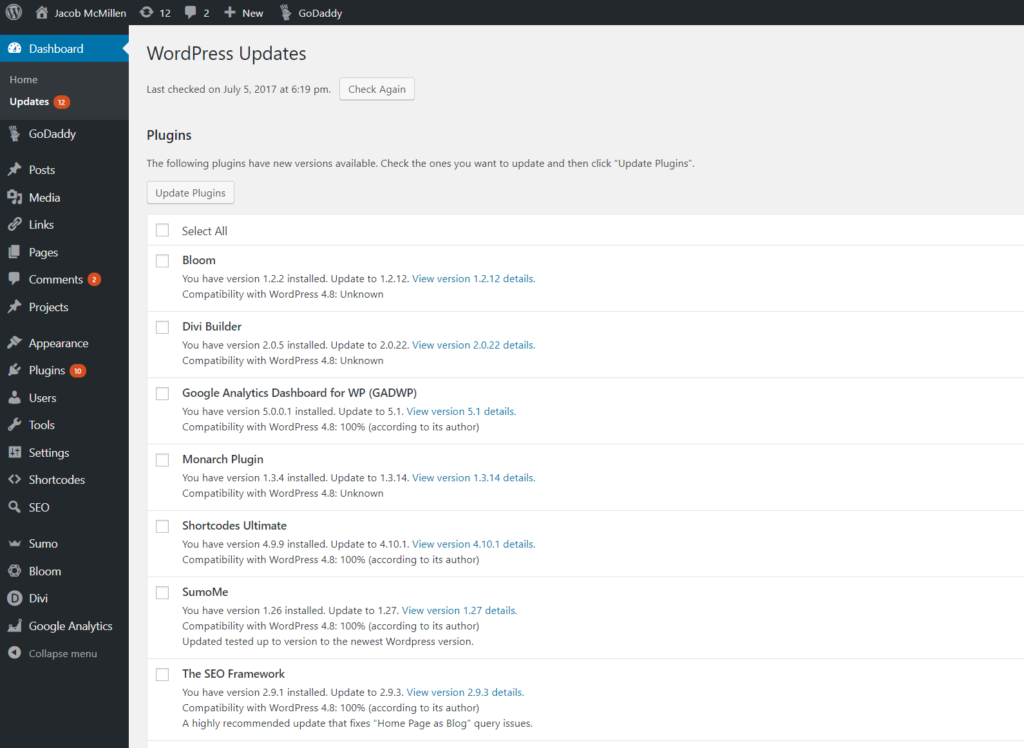
This process can even be done in bulk for your plugins. An aside tip would be to backup your site before making any updates. This way if your new update is faulty in any way or not compatible with your WordPress site you can simply restore the previous version and get things back to normal.
Some hosting providers have solutions for automated updates that save loads of time, and eliminate worries about upgrading manually. https://www.sitepoint.com/siteground-recommended-65-off has a custom opt-in tool that updates their clients’ WordPress sites and all plugins automatically.
Install a security plugin
Much like your computer likely has some sort of antivirus or antimalware software built in, your website will need some similar defense systems. By far the most popular is Wordfence and All In One WP Security and Firewall. Both are free and robust security solutions. They have paid versions as well for more premium protection. To learn more about WordPress security check out WPBeginner’s Step By Step Guide.
5. Be Mindful About Must-Have Plugins
When you’re just getting started with WordPress, you are likely doing lots of research into best practices and troubleshooting some problems you may be having. Which is great, you should absolutely be doing that. Along the way, it is almost inevitable that you will come across some article about “Must Have WordPress Plugins”. While these articles may have great intentions, you should know that more plugins aren’t always better. In fact, the opposite is usually true. You should keep your plugins to a bare minimum to run your site and provide the user experience you desire. More plugins than necessary can slow down your site tremendously. Another issue with more plugins is they come with added vulnerabilities. Any plugin that isn’t up to date has the potential to be hacked or even become faulty. Only download high-quality plugins from trusted sources who update frequently.
6. Gain Insights About Your WordPress Site With Analytics
WordPress is strong in a lot of areas but built in analytics and dashboards is not one of them. Luckily there are many plugins available that make it easy to track important things like where your traffic is coming from, how often people are first-time visitors or returning visitors, bounce rate, and much more.
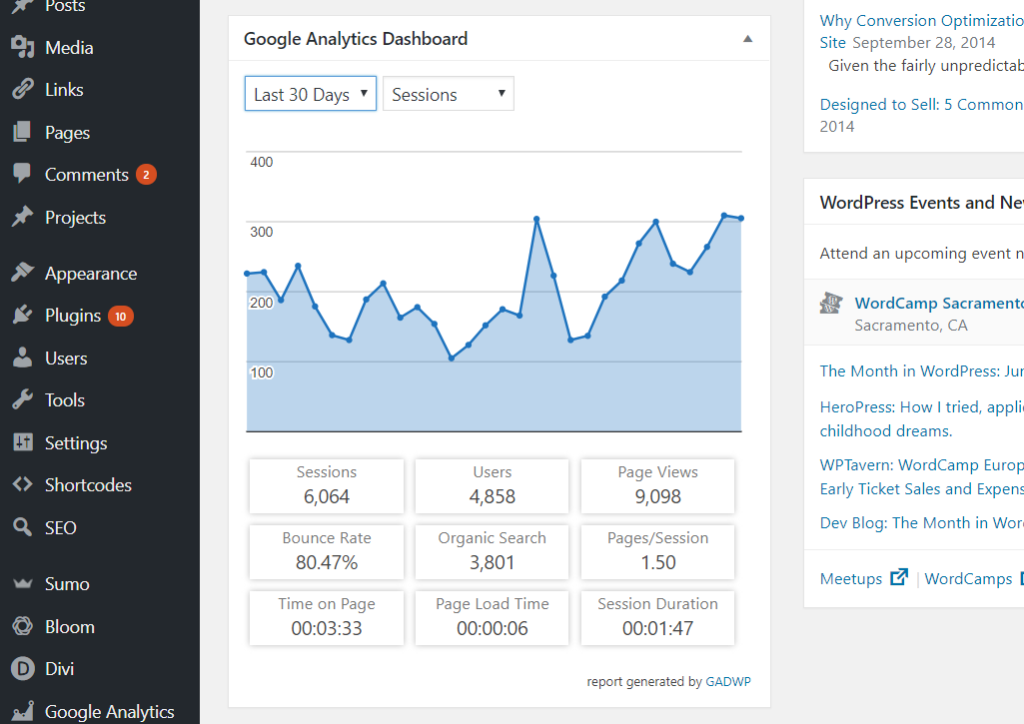
The universal way of tracking your website metrics is to setup an account with Google Analytics. You can see everything you want to track on their dashboard, but a more convenient option is to download one of those plugins we spoke about before to see everything directly on your WordPress dashboard right when you log in.

7. Encourage Communication
With any online presence, you will eventually have readers, followers, and customers reach out for a multitude of reasons. They have questions about your product, they want to praise you for an article that impacted them, they want to work for you, and much more. With that, you’ll need some easy ways for them to reach out.
Add a contact form plugin
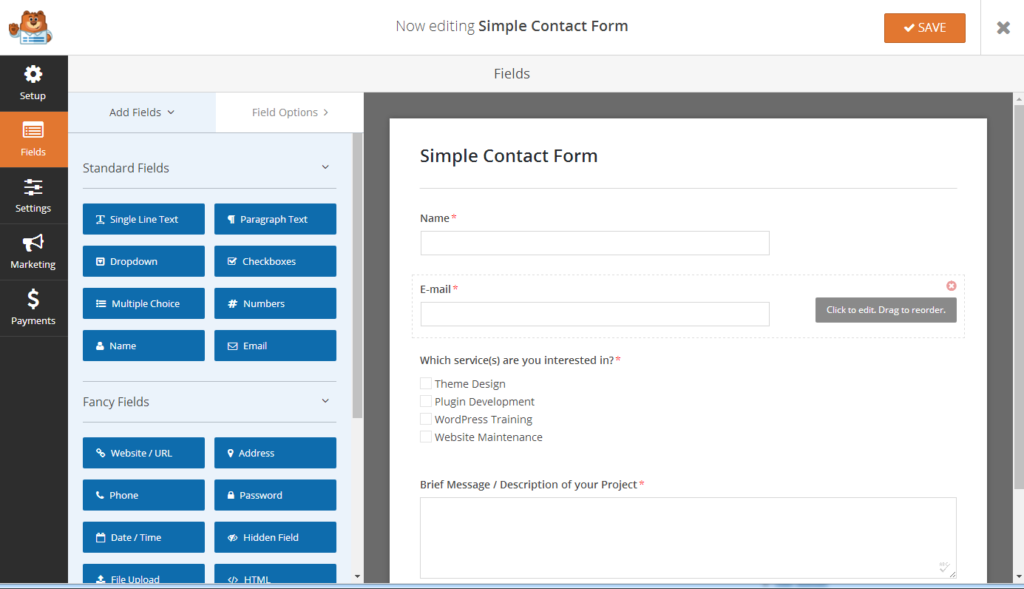
WP Forms and Contact Form 7 are great options for your WordPress site and can be completely customized. You can also use their pre-built templates if you want to set something up quickly. They connect with any list building or newsletter solutions you may be using, like MailChimp or AWeber.
Give them multiple options
While it is great to give your customers and readers ways to contact you, it can also be difficult to weed out the spammers. If you’re wary about signing up for costly services or giving out personal phone numbers and email in the beginning you can use services like Google Voice and Google Suite. Google Voice gives you a free phone number that routes to your cell phone and Google Suite provides you with a custom email address for only $5 per user a month.
Finally, a great option for online chat is the free Tawk.To plugin which lets your users chat with you and your team live from the website. The messages can even be sent to your mobile phone for added convenience.
Summary
Creating a new WordPress site is filled with ups and downs, but is a skill that will pay dividends in the future. While you might not do all the designing yourself it is especially useful and cost effective to understand how to make simple changes and keep the site operational on your own. To continue your learning, you can take courses and subscribe to WordPress specific blogs.